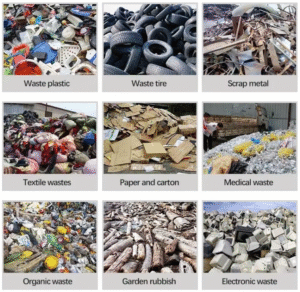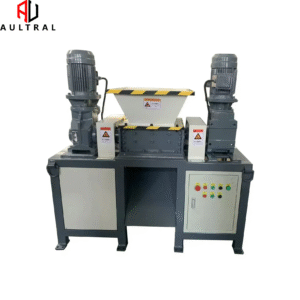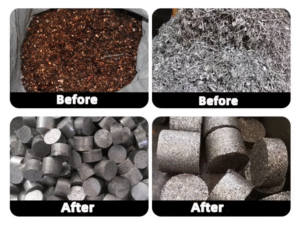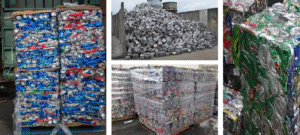In an era where environmental sustainability has become a global priority, industrial shredders are emerging as unsung heroes in waste management and resource recovery. These powerful machines do more than just reduce the size of materials—they enable efficient recycling, minimize landfill dependency, and contribute to a circular economy. This article explores how shredders are revolutionizing environmental protection by transforming waste into valuable resources.
1. The Environmental Crisis and the Need for Shredders
1.1 The Growing Waste Problem
-
The world generates over 2 billion tons of municipal solid waste annually (World Bank, 2023).
-
Plastic waste alone exceeds 400 million tons per year, with only 9% being recycled (UNEP).
-
Landfills contribute to methane emissions, a greenhouse gas 25 times more potent than CO₂.
1.2 How Shredders Help
-
Volume Reduction: Shredders compress waste by up to 80%, reducing transportation and storage costs.
-
Material Recovery: Shredded materials are easier to sort and recycle (e.g., metals, plastics, paper).
-
Energy Recovery: Pre-shredded waste improves efficiency in waste-to-energy (WtE) plants.
2. Key Applications of Shredders in Environmental Protection
2.1 Plastic Recycling Revolution
-
Problem: Millions of tons of plastic end up in oceans yearly.
-
Solution: Shredders break down plastic into flakes for pelletizing and reuse.
-
Case Study: A German recycling plant increased PET bottle recycling rates by 40% after installing advanced shredding systems.
2.2 E-Waste Management
-
Problem: E-waste is the fastest-growing waste stream, with 53 million tons generated in 2023 (Global E-Waste Monitor).
-
Solution: Shredders safely dismantle electronics, recovering gold, copper, and rare earth metals.
-
Example: Apple’s “Daisy” robot shreds iPhones, recovering $40M worth of materials annually.
2.3 Tire Recycling & Rubber Reuse
-
Problem: 1 billion tires are discarded yearly, causing fire hazards and pollution.
-
Solution: Shredders turn tires into crumb rubber for asphalt, playground surfaces, and new tires.
2.4 Organic Waste Processing
-
Problem: Food waste emits methane in landfills.
-
Solution: Industrial shredders accelerate composting by breaking down organic matter faster.
3. Advanced Shredding Technologies Enhancing Sustainability
3.1 AI & Smart Shredders
-
Automated sorting using AI to separate materials (e.g., metals from plastics).
-
Predictive maintenance reduces downtime and energy waste.
3.2 Low-Energy & Solar-Powered Shredders
-
New models cut energy consumption by 30% (EU Ecodesign Directive).
-
Some plants use solar-powered shredders for zero-emission recycling.
3.3 Pollution Control Features
-
Dust suppression systems prevent microplastic emissions.
-
Noise reduction tech (below 70 dB) for urban recycling plants.
4. Economic & Policy Drivers for Shredder Adoption
4.1 Government Regulations
-
EU Circular Economy Plan: Mandates 55% recycling rates by 2025.
-
China’s “Zero Waste Cities” initiative promotes shredder-based recycling.
4.2 Business Opportunities
-
The global shredder market will reach $3.2 billion by 2030 (Grand View Research).
-
Companies profit by selling shredded materials to construction, automotive, and packaging industries.
5. Challenges & Future Innovations
5.1 Current Limitations
-
Contamination risks (e.g., mixed materials reducing recyclability).
-
High initial costs for industrial-grade shredders.
5.2 The Future of Shredding
-
Blockchain tracking to certify recycled material origins.
-
Biodegradable shredder blades (under development at MIT).
-
Space waste shredders for orbital debris recycling (NASA-funded projects).
Conclusion: Shredders as a Pillar of Sustainable Development
Shredders are no longer just waste processors—they are key enablers of the circular economy. By improving recycling rates, reducing landfill use, and recovering valuable resources, shredding technology is proving indispensable in the fight against pollution.





